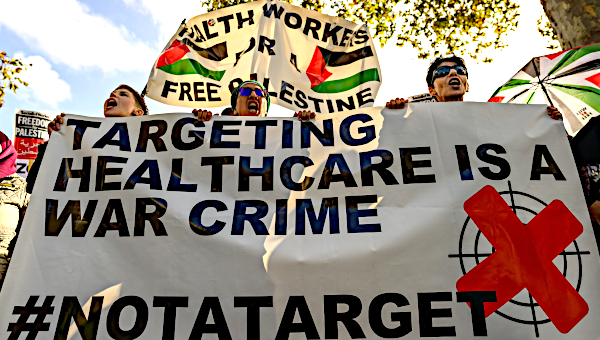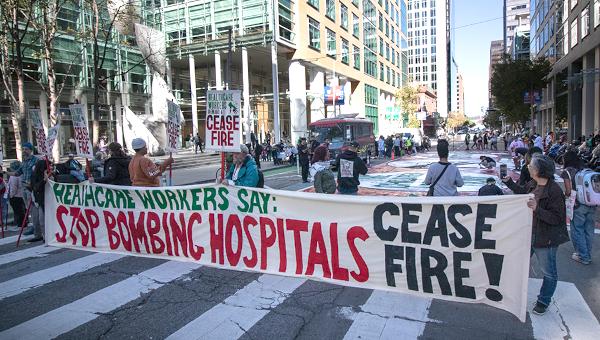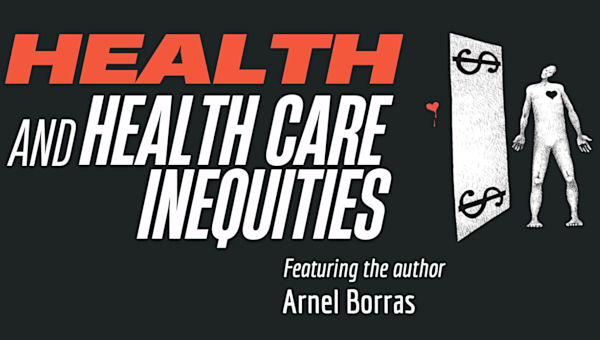If Unions Had Organized the South, Could Trump Have Been Avoided?
At a time when activists and commentators are puzzling over the United States’ enduring conservatism, Michael Goldfield’s new book The Southern Key: Class, Race, and Radicalism in the 1930s and 1940s (Oxford University Press, 2020) provides some perspective. Goldfield argues that the old question “Why no socialism in the US?” reduces to “Why no liberalism in the South?,” which itself is answered, in large part, by unions’ failure to organize the region in the early and middle twentieth century. The book consists of case-studies defending this thesis and exploring what went wrong and how things might have turned out differently. Chris Wright interviewed Goldfield in early November about his arguments and his thoughts on the labor movement today.
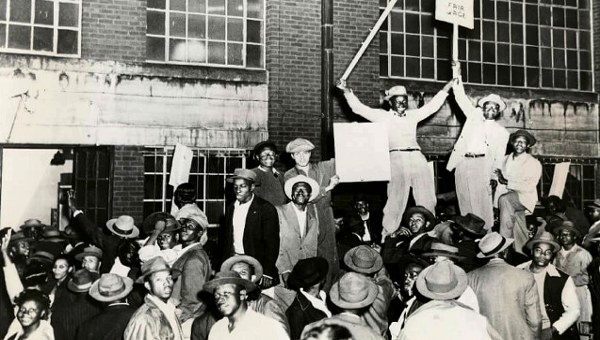
Chris Wright (CW): One of the major theses of your book is that the failure of the Congress of Industrial Organizations (CIO) in the 1930s and 1940s to organize certain key industries in the South, such as woodworkers and textile workers, has shaped US politics and society up to the present. For example, the “liberal” – as opposed to laborite – character of the civil rights movement, Republicans’ racist “Southern Strategy” (influenced by George Wallace’s presidential campaigns in 1964 and 1968), businesses’ relocation to the South in the postwar and neoliberal periods, and in general the conservative ascendancy of the last fifty years were all made possible by the CIO’s earlier missteps. How did these failures to organize a few industries have such far-reaching effects?
Michael Goldfield (MG): Underlying my argument is the unique ability of workers organized at the workplace to engage in what I call civil rights unionism, including demands inside the workplace for more hiring and upgrading of non-whites, especially women, desegregation of facilities, etc. Secondly, this involves broader struggles for desegregation, access, and other issues, in the community at large. Of special importance here is the ability of workers at the workplace to resist and successfully fight against right-wing, racist repression, something that was so successful in silencing and destroying individual white liberals in the South. I discuss a number of such examples in the book, including the Farm Equipment Workers (FE) at International Harvester in Louisville and Local 10 of the ILWU in San Francisco. These instances, though vitally important in their limited impact and providing clear templates for future struggles, were too isolated to affect the general course of events.
There is a clear contrast here with the UAW and the NAACP, the liberal civil rights organization. By 1945-46, the autoworkers union with Walter Reuther at the head had become very bureaucratic. They were on record as supporting civil rights, and Reuther was allied with the NAACP. But what did they actually do? In Detroit, for instance, there were restaurants and bars around auto plants that were segregated, not allowing Blacks in. Reuther and the NAACP sent letters to all the bars and restaurants saying that they should integrate – and of course nobody did anything. At left-wing locals, on the other hand, workers organized. Interracial picket lines went up around the restaurants and bars; the workers told the owners that if they didn’t allow Blacks in, they would have no business from anybody in the union. Instantly, owners changed their policy – thus demonstrating the effectiveness of civil rights unionism.
I can give you an example from my own experience, when I worked at an International Harvester plant outside Chicago. We had a Black worker in our plant who bought a house in a racist all-white community; his house was firebombed twice. Our group controlled the Fair Practices Committee, and we got the union local to vote to support a round-the-clock picket line at the house. Immediately, all the violence stopped. Our plant was about a third African-American, and there were probably quite a few workers who were not sympathetic to what we were doing. But if any of us had been attacked, the whole local would have gone berserk. That type of strength that unions had when they were fighting for civil rights was different from most of what existed across the South.
The organizing, then, of over 300,000 woodworkers (an industry that existed across the deep South, 50% of whose workers were African-American) had the potential to make a tremendous difference. And if the USWA and other unions had maintained their civil rights focus, the course of the civil rights struggle and of history might have been altered.
CW: You’re very critical of the leadership of both the CIO and the Communist Party in the 1930s–40s. Briefly, what mistakes did they make? Why did organizations that, for a time, showed such militancy and effectiveness in organizing particular industries (such as steel, automobiles, and meatpacking, among many others) fail so dismally to organize large swathes of the South?
MG: This is discussed extensively in the book. I analyze in detail how the Stalinization of the Communist International (Comintern) and the US Communist Party (CP) undermined many of their laudatory efforts. I also agree with Nick Fischer’s argument in Spider Web, that liberal anti-communism, as practiced by the UAW under Reuther and the USWA under Philip Murray, aligned itself with racists and fascists. In order to defeat the CP leadership of the Mine, Mill and Smelter Workers, Murray and the USWA allied themselves de facto with the KKK in Birmingham, destroying a progressive civil rights unionism (or at least weakening and limiting its influence) in Alabama. The CIO did the same in destroying the Winston-Salem Food, Tobacco, Agricultural and Allied Workers local. The United Packinghouse Workers did not do this and continued to be a civil rights union. Auto, steel, and meatpacking actually were organized in the South. As Matt Nichter’s forthcoming article in Labor shows (entitled “Did Emmett Till Die in Vain? Organized Labor Says No!”), the UAW and USWA had no rank-and-file civil rights presence, while the UPWA sent an interracial male and female southern delegation to the Emmitt Till trial in Mississippi.
Broadly speaking, the failure of interracial unionism in the South is attributable to three primary causes. First, the right-wing leadership of the CIO – the forefathers of the leadership of the contemporary labor movement – refused to seriously confront white supremacy in the South, squandering golden opportunities to organize Black workers in a number of large southern industries. Second, the left-wing of the labor movement – which had been the major goad behind interracial class unity in the first place – liquidated itself at the behest of the Soviet Union, which demanded labor peace during WWII, then limited their civil rights activity during the Cold War. Third, the postwar red scare – including the 1947 Taft-Hartley Act – dealt a crippling blow.
CW: You argue that in order for workforces to successfully organize, they generally need either “structural power” or “associative power” (or both). For instance, coal miners during the period you write about had immense structural power and therefore tended to serve as a “vanguard” of the labor movement. Textile workers, by contrast, lacked structural power, so they had to rely – or should have relied more than they did – on associative power, making alliances with other organizations and social forces. Today, do you see any industries that have notable structural power and should be a prime target for organizers? Or do you think most workers now are compelled to rely primarily on associative power, on making connections with other groups and social movements?
MG: Miners had structural power in part because they were providing the main fuel to the economy, which they don’t anymore. There are hardly any coal miners left in the United States, despite all the rhetoric. But other people have the power to bring the economy to a halt, like truck drivers and others in the transportation industry. Airline workers could potentially – they could have done it during the air traffic controllers’ strike, but of course the unions wouldn’t have considered that. It’s interesting that workers in the food production industry and the warehouse and logistics industries are suddenly realizing how important they are, given the pandemic, and are mobilizing around their terrible treatment. There have been 44,000 cases of COVID-19 in the hundred-plus meat processing plants and over two hundred deaths. People are not happy about this. In Detroit, where I am, bus drivers have struck over the lack of safety. It seems to be a generalized phenomenon that’s taking place, but I don’t know how to gauge it. I read Labor Notes and I subscribe to it, but its reporters are always seeing a new upsurge taking place. The United States is a big country and there are always strikes happening somewhere, but it doesn’t necessarily mean that a large movement is in the offing.
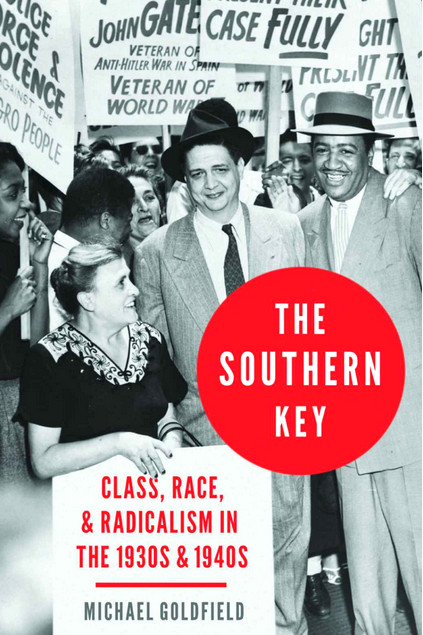
Still, we’re seeing people in places that were historically difficult to organize getting more upset and taking action. Many of the logistics hubs, for instance, are in the South. One of the biggest in the country is in Memphis, there’s a big one in Louisville, etc. These are urban, interracial workforces. The South, of course, is very different now than it was in the 1930s and 1940s: it has much more economic dynamism, including a significant percentage of the auto industry, particularly transplants (foreign plants that have their production facility in the US). While Detroit still has more auto production and more parts, there are huge parts corridors in states across the South.
Public service workers, too, are getting screwed really badly. The reason we had so many teachers’ strikes in so-called red states is that the budget cuts were much more severe there. When these people struck, they had broad associative power and huge amounts of public sympathy. The Chicago Teachers Union organized parents and others in the community to support them, which hadn’t previously been done as much by teachers’ unions. In West Virginia, a state that overwhelmingly voted both in 2016 and 2020 for Trump, schoolteachers were militant and had broad support throughout the state. The same was true in Oklahoma, and some of these same things happened in Mississippi. So I think that the possibilities for a Southern upsurge, as well as in the country as a whole, are real. On the other hand, there isn’t the same insurgent, radical leadership that there was in the 1930s.
CW: It’s obviously hard to generalize over the labor movement, but are you concerned that unions today too often adhere to the same earlier, self-defeating trends of centrism and collaborationism? Or do you see cause for hope that the kinds of errors the CIO made in its Southern campaigns – and that the AFL-CIO continued to make for decades thereafter – are finally being overcome? Do you think organized labor is starting to turn the corner?
MG: No. While there are insurgent parts of the organized labor movement, including those who had threatened a general strike if Trump tried to steal the election, the AFL-CIO and its major unions, short of insurgencies and new leadership, are too sclerotic to lead the next wave of struggle.
CW: Racism and white supremacy are central to your analysis. The CIO’s inability to organize the South made possible the extremes of white supremacy we saw in the postwar era and we’re seeing today, which have catastrophically undermined class solidarity. What do you think of the current Black Lives Matter movement? Is it wise to place the dominant emphasis on police brutality and defunding the police, or are there more effective ways to challenge white supremacy? Should activists organize around shared class interests with allegedly racist whites rather than the divisive issue of abolition of the police?
MG: The police were established to play the role of repressing labor and communities, as much recent literature documents. This is central to capitalist rule and its function should be abolished. As such, police unions are not unions and do not belong in the labor movement. On the other hand, the demand to abolish the police needs to be sharpened. As many have noted, lots of things the police do, including responding to disturbed people, should be delegated to others, and removed from policing. On the other hand, there are certain types of protective services for which there should be an organization that serves. What to do about rape and violence against women? Who do you go to when your car is stolen? This whole range of concerns and demands needs to be delineated clearly so that people can be sure that we get rid of the police in their anti-labor, racist functioning, but still have necessary services so that we do not merely exist in an anarchic state of chaos, which is the impression that opponents of our demands give.
Many left-wing unions and some others as well combined broad class issues, interracial solidarity, with racial egalitarian demands (I discuss these questions also in The Color of Politics). The examples I give of certain civil rights-oriented unions (such as FE and ILWU Local 10) were successful at doing this, too. •


